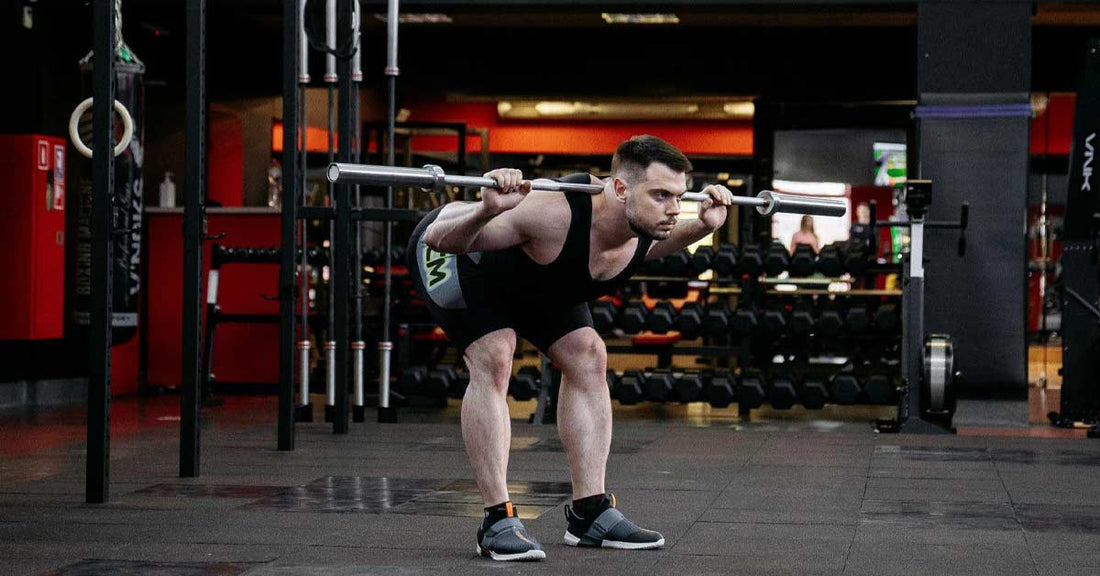
Essential Mobility Drills for Powerlifters: Unlock Your Squat, Bench, and Deadlift
Powerlifting is about generating maximum force. But to express that force safely and effectively, you need adequate mobility. Limited mobility in key areas like the hips, ankles, and upper back can lead to technical breakdowns, create sticking points, and significantly increase your risk of injury. Incorporating a few essential mobility drills into your routine can be a game-changer, helping you get into better positions, lift more weight, and stay healthier long-term. This guide provides the must-do mobility drills for every powerlifter.

Why Mobility Matters More Than Passive Stretching
For a powerlifter, mobility is not the same as flexibility. Flexibility is the passive range of motion of a joint, while mobility is your ability to actively control your joints through their full range of motion. We need to be strong and stable in the positions our sport demands. These drills are designed to improve that active control.
1. Hip Mobility: The Key to a Deeper, Stronger Squat
Tight hips are the enemy of a good squat and deadlift. They can cause lower back rounding (buttwink), forward lean, and knee pain.
-
The Drill: 90/90 Hip Switches
-
How: Sit on the floor with both knees bent at 90 degrees, one leg in front of you (external rotation) and one to the side (internal rotation). Keeping your chest up, rotate your hips to switch to the opposite side without using your hands for support.
-
Why: This drill actively improves both internal and external rotation of the hip, which is crucial for achieving depth and keeping your knees out during the squat.
-
-
The Drill: Deep Squat Hold (Goblet Squat Hold)
-
How: Hold a light dumbbell or kettlebell at your chest (like a goblet squat). Sink into the bottom of a deep squat, keeping your chest up and heels on the ground. Use your elbows to gently push your knees out. Hold for 30-60 seconds.
-
Why: This is one of the most specific ways to improve your squat position. It grooves the pattern, stretches the adductors (inner thighs), and improves ankle mobility under load. Renowned physical therapist and coach Dr. Aaron Horschig of Squat University frequently recommends this for improving squat depth.
-

2. Thoracic Spine (Upper Back) Mobility: For a Better Arch and Healthier Shoulders
A stiff thoracic spine can prevent you from setting a good arch in the bench press and maintaining an upright torso in the squat. This can lead to decreased performance and put extra stress on your shoulders and lower back.
-
The Drill: Cat-Cow
-
How: Start on all fours. As you inhale, drop your belly and look up, arching your back (cow). As you exhale, round your spine up towards the ceiling, tucking your chin (cat).
-
Why: This simple movement promotes both flexion and extension through the thoracic spine, gently mobilizing the vertebrae.
-
-
The Drill: Thoracic Extensions on Foam Roller
-
How: Lie with a foam roller positioned across your upper back (at the bottom of your shoulder blades). Support your head with your hands. Gently extend your upper back over the roller, keeping your core tight to prevent your lower back from arching excessively.
-
Why: This directly targets and improves thoracic extension, which is essential for setting a stable arch in the bench press and keeping your chest up in the squat.
-
3. Ankle Mobility: The Unsung Hero of the Squat
Limited ankle dorsiflexion (the ability to pull your toes up towards your shin) is a common cause of heels lifting, forward lean, and buttwink in the squat.
-
The Drill: Banded Ankle Mobilization
-
How: Anchor a resistance band to a low point on a power rack. Step inside the band and place it on the front of your ankle joint. Step forward to create tension. Keeping your heel on the ground, drive your knee forward over your toes, holding the stretch.
-
Why: The band provides a posterior pull on the talus bone, helping to clear space in the ankle joint and improve the quality of the dorsiflexion movement.
-
4. Shoulder Mobility: Protect Your Bench Press
-
The Drill: Band Dislocations
-
How: Hold a light resistance band with a wide grip. With straight arms, bring the band from in front of you, up and over your head, and down behind your back. Return to the start. Move your hands closer together to increase the stretch.
-
Why: This is an excellent dynamic stretch that takes the shoulder through its full range of rotation, warming up the joint and improving mobility. It is a staple warm-up for many lifters and is often included in shoulder pre-hab routines like those from T-Nation, which also emphasizes face pulls.
-
How to Incorporate Mobility Work
You don't need to spend an hour on mobility. The key is consistency.
-
In Your Warm-up: Spend 5-10 minutes before each training session performing 1-2 drills relevant to the lifts you're about to perform.
-
On Rest Days: A longer, 15-20 minute mobility session can be a great form of active recovery.
-
Between Sets: Light mobility drills for non-competing joints (e.g., hip mobility between bench press sets) can be an efficient use of your rest time.
Mobility is the foundation upon which safe and effective strength is built. By consistently incorporating these simple, targeted drills into your routine, you can improve your positioning, reduce your risk of injury, and ultimately unlock your true strength potential. Stop letting poor mobility be your limiting factor.
What are your essential mobility drills? Share your favorites in the comments below!








